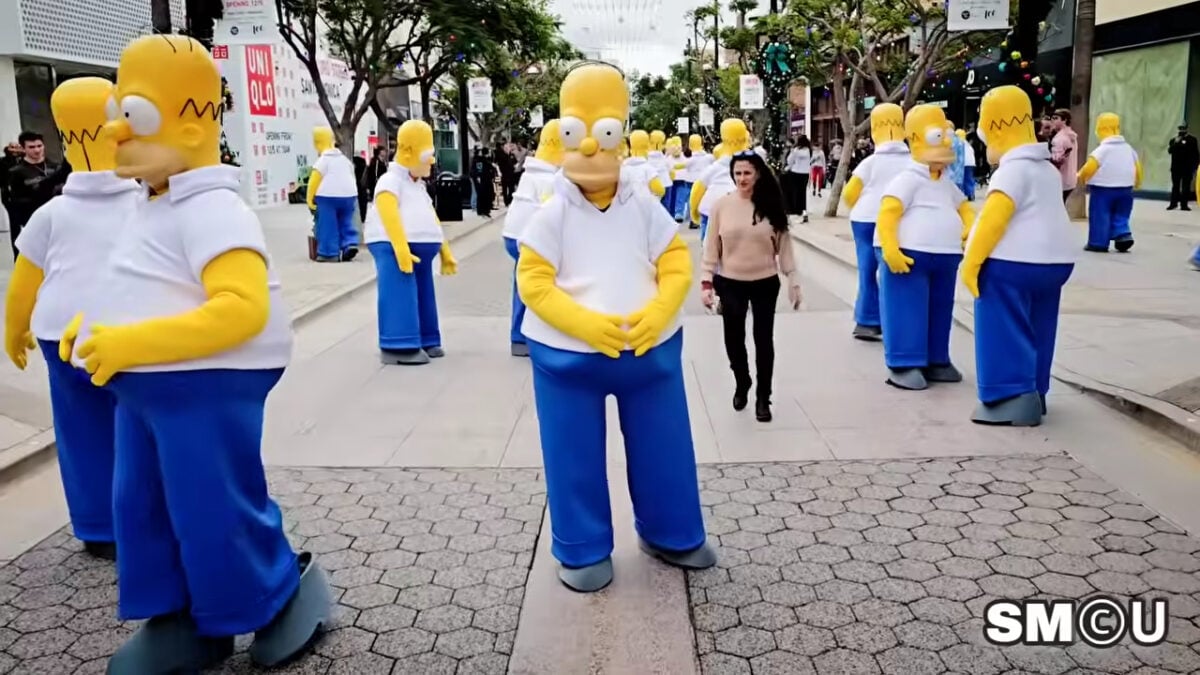Southern California witnessed a surreal spectacle today: a literal busload of Homer Simpsons, lumbering through reality, embodying the ‘angry, hungry, and gassy’ clones first seen rampaging through Fortnite. This wasn’t a glitch in the Matrix; it was Epic Games’ latest, elaborate, and undeniably expensive marketing gambit to promote the new Fortnite x The Simpsons crossover. But beyond the cartoonish absurdity, what does this multi-million dollar ‘Multiplidiocy’ really tell us about the state of gaming, marketing, and the increasingly blurred lines between our digital and physical worlds?
The Real Story: When Reality Becomes a Marketing Prop
Epic Games, the titan behind Fortnite, isn’t known for subtlety. Their marketing campaigns often hit with the force of a digital meteor. The ‘Multiplidiocy’ trailer, preceding this real-world invasion, promised chaos with Homer clones spreading across the Fortnite island. Now, they’ve deployed that same chaotic energy into our cities. This isn’t just about selling a new skin; it’s about selling an experience, a cultural moment, even if that moment involves costumed adults in a bus. The conflict isn’t just between Homer clones and players; it’s between authenticity and engineered viral sensation. Every major pop culture entity, from Marvel to Star Wars, has, at some point, found itself assimilated into the Fortnite metaverse. The Simpsons, a cultural behemoth in its own right, was always an inevitable, if not entirely surprising, target. The question isn’t ‘why The Simpsons?’ but ‘why this level of real-world theatricality for a digital update?’
The stunt, involving an undisclosed number of actors in full Homer Simpson attire, driving around a major metropolitan area, requires significant logistical planning, permits, and, crucially, a hefty budget. This isn’t pocket change for a TikTok ad; this is a full-scale physical activation designed to dominate social feeds and traditional news cycles alike. It’s an investment in spectacle, pure and simple. And spectacle, as we know, comes with a price tag that rarely makes the headlines but always impacts the bottom line, and potentially, the consumer.
“An unnamed marketing analyst, exasperated by the industry’s excess, reportedly quipped, ‘They’re not just selling a game; they’re selling the cultural bankruptcy that comes with it. A bus of Homers? That’s peak absurdism for peak dollars. It screams desperation wrapped in innovation, hoping nobody notices the stench of a fading unique selling proposition.'”
Why It Matters: The Price of Pop Culture Hijacking
This isn’t merely a fun little marketing stunt; it’s a calculated move designed to maintain Fortnite’s precarious perch at the apex of pop culture. In an increasingly fragmented digital landscape, attention is the new currency. Epic Games understands this better than most, continually injecting new, high-profile collaborations into their ecosystem to prevent player fatigue and churn. But at what cost? Both literally, in terms of the millions poured into such elaborate cross-promotions, and metaphorically, in terms of what it signifies for organic creativity.
The blurring of lines between the virtual world of Fortnite and our physical reality is a central theme here. When digital characters literally invade our streets, it forces a conversation about the pervasive nature of brand influence. Is this a clever, harmless nod to fans, or a subtle, aggressive push to ensure the Fortnite brand remains inescapable, constantly demanding real-world attention for in-game content? The cynical view suggests the latter: a relentless pursuit of mindshare, leveraging beloved intellectual properties not just within the game, but by physically manifesting them in our public spaces, commanding attention whether you play Fortnite or not.
The controversy isn’t in the existence of the crossover itself – that’s par for the course for Fortnite. The scandal lies in the sheer scale of the investment in such a visibly absurd stunt, and what it implies about the diminishing returns of traditional digital advertising. When you need a bus full of gas-guzzling Homers to make headlines, one must ask if the marketing has become more elaborate than the product innovation it’s meant to highlight. The ‘Multiplidiocy’ isn’t just a catchy trailer title; it feels like an accidental self-description of the entire strategy.
The Bottom Line: More Chaos, More Cost?
Epic Games has, once again, proven its mastery of spectacle. Yet, as the novelty of busloads of Homers fades, what remains? A lingering question about sustainability. How many more beloved franchises can be absorbed? How many more real-world invasions are necessary to keep the engagement high? This aggressive, costly brand of ‘multiplidiocy’ pushes boundaries, but it also raises concerns about whether this endless chase for cultural relevance is masking a deeper void. If this pattern of extravagant, reality-bending marketing continues, expect not just cartoon characters, but perhaps entire virtual worlds, to start spilling into our actual lives, demanding not just our screen time, but our sidewalk space and our collective bewildered attention.


